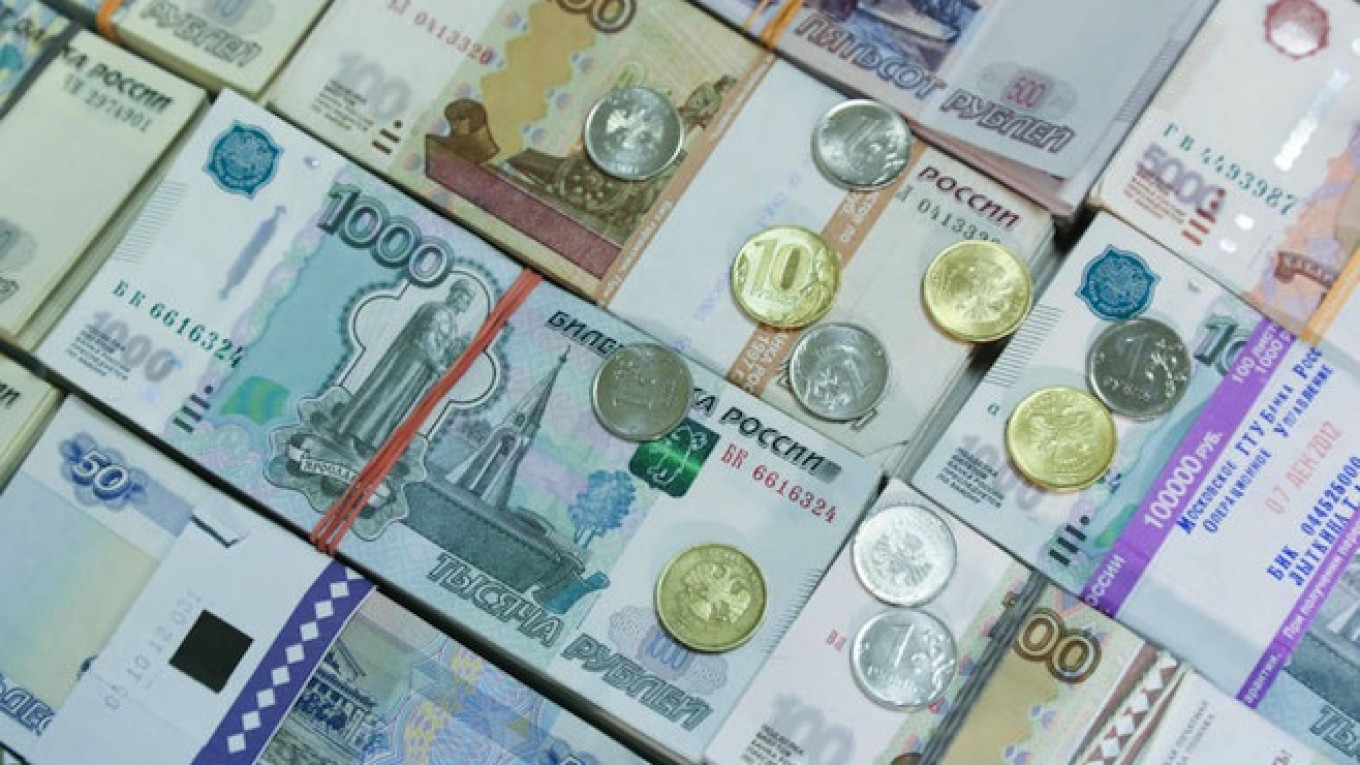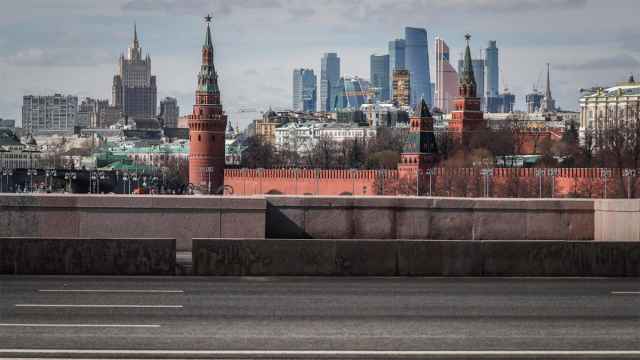The Central Bank is continuing to scale back its support for the ruble, signaling that its plan to let the currency float freely from the beginning of next year remains on track.
Underlining confidence among policymakers that Russian markets have stabilized after being knocked by Western sanctions over Ukraine, the Central Bank announced on Tuesday a combination of moves that in effect reduce the size of interventions to curb currency market fluctuations.
It signals a resumption of a long-term policy shift to make inflation a more important benchmark than the exchange rate after several months on hold while the bank was forced to defend the ruble, weakened by the crisis in neighboring Ukraine.
As part of the plan, the ruble's trading corridor will be abolished altogether from January next year and regular daily interventions will cease, although the bank will reserve the right to make discretionary interventions in the interests of financial stability.
"The most important conclusion is that this signifies there hasn't been a change of direction," said Ivan Tchakarov, chief Russia economist at Citi. "This is confirmation: we have a plan and we're going to stick to it."
The Central Bank said that from June 17 it had reduced the intervention threshold for moving the ruble's floating corridor against a dollar-euro basket to $1 billion from $1.5 billion.
It also reduced the amount of daily interventions for curbing ruble volatility inside the corridor by $100 million, and widened the range in the middle of the corridor where it carries out no interventions to 5.1 rubles from 3.1 rubles.
The combination of moves means that the ruble will now become more flexible within its floating corridor, which presently stretches from 36.40 to 43.40 against the basket, with no Central Bank interventions at all in a broad range in the middle of this corridor.
Moves in the corridor will also become more frequent — although still less often than before the Ukraine crisis.
The Central Bank carries out unlimited interventions at the edge of the corridor, so more frequent moves of the corridor implies more flexibility for the ruble.
Now, the Central Bank will move the corridor by five kopecks each time it has spent $1 billion in interventions.
The ruble weakened slightly on Tuesday after the Central Bank announced its new intervention parameters, and was down 0.4 percent on the day against the basket at 40.38.
The bank said it had made the changes in the light of reduced volatility on the forex market and lower risks for financial stability — a signal that it sees financial normality returning as concerns linked to Ukraine ease.
In March it had dramatically raised the size of the intervention threshold, to $1.5 billion from $350 million, after the escalating Ukraine crisis caused a massive ruble sell-off, heightening concerns about Russia's overall financial stability.
The higher threshold paved the way for the Central Bank to spend some $25 billion in March to defend the ruble — although it still has $470 billion in its war chest.
Ukraine Concerns Ease
The ruble has rebounded in recent weeks, along with Russia's stock and bond markets, as investors conclude that Russian military intervention in Ukraine and tougher western sanctions are unlikely.
The latest changes announced on Tuesday mean that when the ruble is trading in a range between 37.35 and 42.45 against the basket, the bank will carry out no interventions.
It will sell $200 million a day when the ruble is trading between 42.45 and 43.40, and buy $200 million when it is trading between 36.40 and 37.35.
Before the Ukraine crisis caused market turmoil, the Central Bank had been gradually reducing its interventions, as part of the strategy to adopt a full inflation targeting regime from January.
Inflation targeting means that instead of using the exchange rate as the main policy anchor, the Central Bank instead relies on tighter control of interest rates and regards inflation as the main policy benchmark.
Economists welcome the policy shift, which should contribute to lower inflation and enable the ruble to adjust to external shocks, making Russia's economy less vulnerable to potential falls in the prices of its commodity exports.
However, the downside is that the currency becomes more volatile — something that can cause wider financial instability if it goes too far. In the worst case a slumping currency can cause a panic run on the currency and bank deposits.
"In times of trouble you would like the currency to weaken — this is exactly what you'd like to see when an emerging market economy comes under pressure — but you wouldn't like it to weaken to the extent that everybody becomes afraid," said Citi's Tchakarov.
Following the emergency measures to support the ruble in March, many economists said they were sceptical that the Central Bank would be able to complete the planned shift to full inflation targeting by next January.
"I think this will happen," said Tchakarov. "But what Russia will be doing will be very similar to what many other emerging markets are doing.
"It doesn't mean they'll completely take their hands off the market. If they think the exchange rate is moving too fast, they will be intervening."
See also:
A Message from The Moscow Times:
Dear readers,
We are facing unprecedented challenges. Russia's Prosecutor General's Office has designated The Moscow Times as an "undesirable" organization, criminalizing our work and putting our staff at risk of prosecution. This follows our earlier unjust labeling as a "foreign agent."
These actions are direct attempts to silence independent journalism in Russia. The authorities claim our work "discredits the decisions of the Russian leadership." We see things differently: we strive to provide accurate, unbiased reporting on Russia.
We, the journalists of The Moscow Times, refuse to be silenced. But to continue our work, we need your help.
Your support, no matter how small, makes a world of difference. If you can, please support us monthly starting from just $2. It's quick to set up, and every contribution makes a significant impact.
By supporting The Moscow Times, you're defending open, independent journalism in the face of repression. Thank you for standing with us.
Remind me later.






